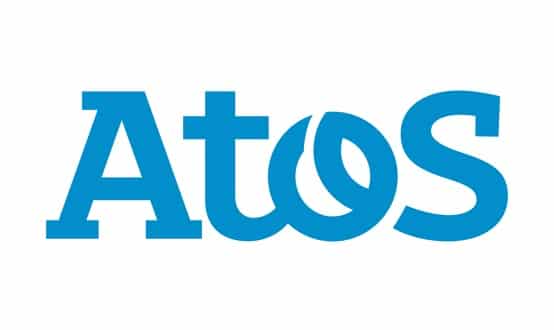Understanding e-learning
- 18 August 2005
 Dr Wassila Naamani Mehanna
Dr Wassila Naamani Mehanna
e-Learning Consultant, Teknical, Member of Serco Learning
The NHS and other government agencies are all under pressure to provide more continuing education for their workforces at the best possible price. Technology is being seen as the solution that increases effectiveness, caters for mass education and reduces cost. It is therefore seen, sine qua non, as the ultimate solution to all problems.
However, despite this increased interest in using e-learning technologies to enhance learning, little research has actually been conducted to validate its potential. Nor have we seen much consideration of the notion that it is not the technology that makes the difference but the interactions and the design behind the online content and activities.
This article, based on robust research, aims to help the readers understand e-learning and what is needed to make it effective within all teaching and learning contexts.
Understanding e-learning
The field of e-learning is still in its embryonic stage and is experiencing a tremendous amount of flux. Moreover, a huge ambiguity surrounds this phenomenon, starting with the way people characterise it.
The term e-learning is relatively new, and, in any attempt to define it, one also comes across a plethora of terms. ‘Online learning’, ‘web-based learning’, ‘web-based instruction’, ‘internet delivery’, ‘virtual learning environments’ and ‘networked learning’ are terms which represent approaches to the design of specific learning situations.
Jones and Steeples (2002) adopted the networked learning terminology and define it as:
“Learning in which Information and Communications Technology (ICT) is used to promote connections: between one learner and other learners, between learners and tutors, between a learning community and its learning resources”.
They quoted Mason & Kaye (1990) saying that this new mode of learning could be considered the outcome of convergence both in the sense of the coming together of telecommunications and computer technologies in a digital form, and the coming together of distance and place-based learning in a new hybrid form.
Thus, electronic learning (e-learning) has become a reality primarily through the merging of computer-based communications (e-mail) and the information transmission capabilities of the World Wide Web (WWW). Initially the WWW was another format for knowledge transmission with no facilities to support interpersonal communication, but Java and Web scripting languages have now created the potential for the Internet to become truly interactive (Darby, 2002).
Online resources and tools are understood to mean the information and communication technologies (ICT) applied to teaching and learning for the purpose of providing:
- the flexible delivery of educational material (instructional technology);
- the guidance and facilitation of the experience of the student (learning technology); and
- the support of communities of learners (collaborative learning).
“These technologies make it possible to provide access to world-wide resources; facilitate the accumulation and presentation of data; and enable communication, interaction, and collaboration among students and instructors to improve the practice of teaching and the experience of learning.” (National Science Foundation, 1998).
‘Blended Learning’ emerged as the most recent term and gained considerable currency in the past two years. Kerres & DeWitt (2003) noted that blended learning involved mixing different didactic methods and delivery formats. Driscoll (2002) gave three definitions of blended learning. Firstly, it is the integration of traditional learning with web-based on-line approaches. Secondly, it could be seen as the combination of media and tools employed in e-learning environments. Finally, it is the combination of a number of teaching and learning approaches irrespective of the technology used.
e-Learning and learning
A literature review I conducted revealed a struggle to link the potential of online technology with what online education should deliver ideally in terms of learning and achievement.
This is not to say that this medium is ineffective but rather that there is little systematic and empirical work to show evidence of its evaluation. On the ground, the push for sales was huge but lacked a basis in education research and guidance from educators.
We need to explore how learners could learn through this medium and how e-learning enhances students’ learning experience and outcomes.
My research indicates that sound teaching and learning foundations are needed if we are to provide significant improvements in outcomes from e-learning delivered through high capacity communication services.
Once this is applied e-learning becomes a ‘model’ for teaching that uses technology as a ‘tool’ to facilitate independence in learning through accessibility, flexibility, convenience and control. (Mehanna, 2002, 2004a)
In conclusion, choosing the right term to describe information technology when applied to learning and training is probably less important than recognising that the role of information technology in education goes well beyond the mere delivery of information.
Even when the technology is serving to transmit information, it should be structured in particular ways so as to achieve defined educational purposes. It is the way in which it is structured that is of great importance, not the speed or accuracy with which it is being carried from point to point. Moreover, buying the technology or the platform should be based on a needs analysis and identification and the content and delivery should be based on sound instructional design underpinned by valid educational principles.
References and further reading
Darby, P (2002) Doers, Dreamers and Drivers of Information Technology in Government. Government Technology (March)
Driscoll, M. (2002). Blended Learning: Let’s Go Beyond the Hype. e-Learning, March1, 2002.
Kerres & DeWitt (2003) A didactical framework for the design of blended learning arrangements. Journal of Educational Media, 28, (2–3) 101-113.
Mehanna, W. (2002). A Case Study of Interactions with, Attitudes To, and Perceptions of Online Learning. MPhil Thesis, The University of Cambridge.
Mehanna, W. (2004a). A Case Study of Interactions with, Attitudes To, and Perceptions of Online Learning. In Technology and Education (Ed). LAES.
National Science Foundation (NSF). (1998). "Information Technology: Its Impact on Undergraduate Education in Science, Mathematics, Engineering, and Technology." NSF workshop, April 18-20, 1996 (NSF 98-82). Arlington, VA
Steeples, C. and Jones, C. (2002). Networked Learning: Perspectives and Issues. London: Springer-Verlag London Limited.




